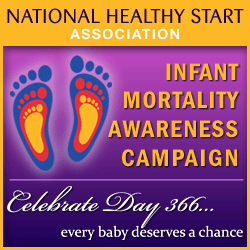BRIDGES is working with National Healthy Start Association to make everyone aware about infant mortality this month.
What is Infant Mortality and Why is It Important?
Infant mortality is when a baby dies before its first birthday. In 2020, the infant mortality rate (IMR) in the U.S. was 5.681 per 1,000 live births. The health and well-being of children and families across the globe are measured by infant mortality rates.
The infant mortality rate is an important measure of the well-being of infants, children and pregnant women because it is associated with a variety of factors, such as
- Maternal health
- Quality and access to health services and medical technology
- Poverty and socioeconomic conditions
- Community health
- Public health practices
America’s IMR has gone down over the years, but it is still higher than many other developed countries.
Causes of Infant Mortality
The five leading causes of infant death are birth defects, preterm birth and low birth weight, sudden infant death syndrome, maternal pregnancy complications and injuries (e.g., suffocation).
There are huge disparities based on race and ethnicity, as well as geographic areas. The Centers for Disease Control and Prevention (CDC) has detailed information explaining these disparities.
How Can You Get Involved?
Click the links below that will take you to resources to help raise infant mortality awareness.
Working together, we can reduce the number of babies that do not live to see their first birthday. It’s up to us to make sure that families are equipped with the tools to live healthier lives.
Celebrate Day 366/NIMAM Campaign Resources
- Infant Mortality Awareness Month Toolkit (PDF) – to help organize fundraising events and advocacy activities in your community
- Infant Mortality Awareness Fact Card (PDF)
- Celebrate Day 366 Web Badge (GIF) – add the badge to your own website or blog; link it to this page so all your visitors will find these resources themselves
- Infant Mortality Awareness Month Event Form (PDF) – complete our form and email it to us to let us know what you have planned for NIMAM!

